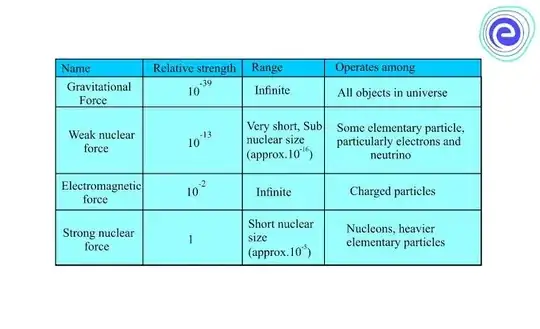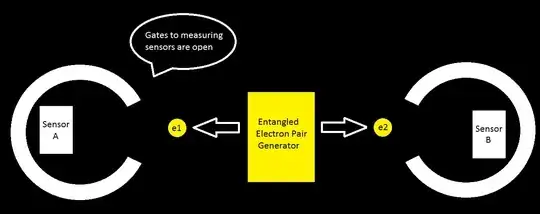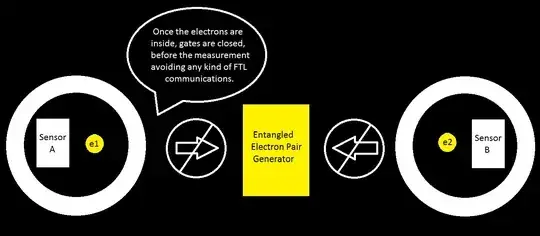TLDR:
There seems to be a loophole in Bell's test that is not addressed or eliminated before we can successfully conclude that it proves that the Universe is unreal and non local. The entangled particles can still communicate at a non instantaneous but FTL speed. I'm unable to find any reference for such a loophole on the intenret. Is this loophole acknowledged and eliminated?
What happens if we perform the Modified Bell Test by Electromagnetic Isolation (MoBeTEIs) experiment mentioned below? What are the consequences of two different outcomes?
Please answer the above two questions pointwise separately to be more clear and avoid confusion. The rest of the post is about me explaining the background and why I think the question is valid.
This is in the light of recent Nobel prize given to physicists
for experiments with entangled photons, establishing the violation of Bell inequalities and pioneering quantum information science
The claim is that they have conclusively proven that the result of Bell's test and the resulting violation of Bell inequalities confrims that the Universe is not locally real, by closing all the plausible loopholes except superdeterminism, which in general, is
fundamentally untestable, as the correlations can be postulated to exist since the Big Bang, making the loophole impossible to eliminate.
Another important loophole was the locality loophole where there was a possibility for the entangled particles to communicate at the speed of light. This was eliminated by using long distances between measurements of entangled particles, where both the measurements were made within the narrow timeframe shorter than the time required by light to travel between the two places.
But, there seems to be another loophole which I'm not able to find being accounted for or being discussed.
There is still a possibility of non instantaneous but faster than light(FTL) signalling between the entangled particles.
FTL travel is not completely unproven, We already know Einstein's theory of relativity is at odds with quantum mechanics and his general theory of relativity is incomplete as it melts down at singularity in blackholes and at the beginning of the Universe.
Given this, it seems rather interesting that important features of quantum mechanics - non locality and unrealism, is proven assuming that the thoery of relativity is absolutely true, when we know that the latter is incomplete and is in odds with the very thing it is being used to prove.
The possibility of non-instantaneous but FTL signalling seems far more tenable and intutive rather than Universe being non-local and unreal. And therefore this seems to be a loophole for Bell's test.
This loophole may be non falsifiable if the signalling is too weak a force to detect. But it is possible to block the signalling given that the entangled particles are using a force which is susceptible to shielding.
There are four known forces of nature:
The strong and weak nuclear forces can be excluded as it is short range acting.
Gravitational influence or force, as of now, cannot be shielded and gravitational shielding is still a hypothetical concept. So if the entangled particles are using gravitational force to interact, then as of now it is impossible to test it.
But given that electrons are charged particles and photons are electromagnetic in nature, it is more probable that if at all the entangled electrons and photons interact they possibly interact using electromagnetic interaction which can be shielded using electromagnetic shielding and lead shielding.
Regarding electromagnetic force travelling only at speed of light, it is still thoeretically possible for electromagnetic force to travel FTL, if the space between entangled particles itself is stretched and snaps when the measurement is made just like the diameter of the Universe(46.1 billion light years) is larger than the age of the Universe(13.8 billion years) and like shock wave in air moving at faster speed than sound.
Modified Bell Test by Electromagnetic Isolation(MoBeTEIs) Experimental Setup:
This modified Bell test would have one extra feature of isolating measurement devices within a globe which can shield from electromagnetic force.
Initially entangled particles are created and sent to two measuring devices which are kept inside electromagnetic shielding globes with gates open, so as to let the electrons get inside.
Once the entangled particle enters the globe, before it is measured, the gates of the globe needs to be closed so as to not either let out or let in any electromagnetic signals.
There are two possible outcomes for this experiment and I think the following are the ramifications of the respective outcomes of the experiment.
Bell equality is still violated in MoBeTEIs, which maintains status quo assumption but we also know that entangled particles used in MoBeTEIs does not communicate using electromagnetic signals.
Bell equality is not violated in MoBeTEIs, proves the Universe to be local and real and also favours hidden variable theories. There will be huge ramifications to Copenhagen and Many worlds interpretation. The possibility FTL signalling will be confirmed.
What do you think happens if we actually perform the MoBeTEIs experiment? What would the different results mean according to you?


